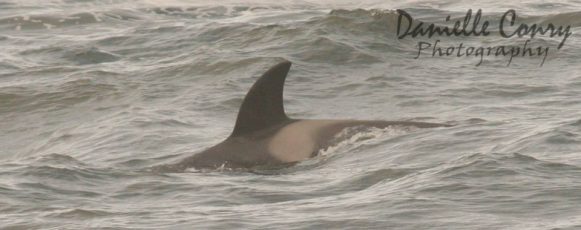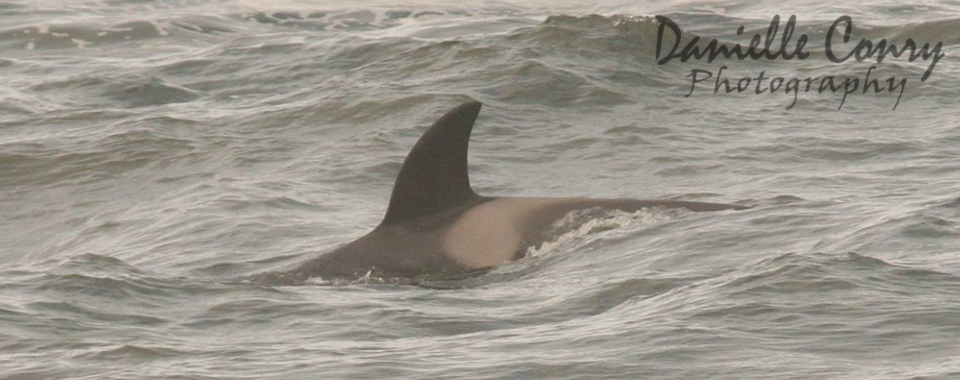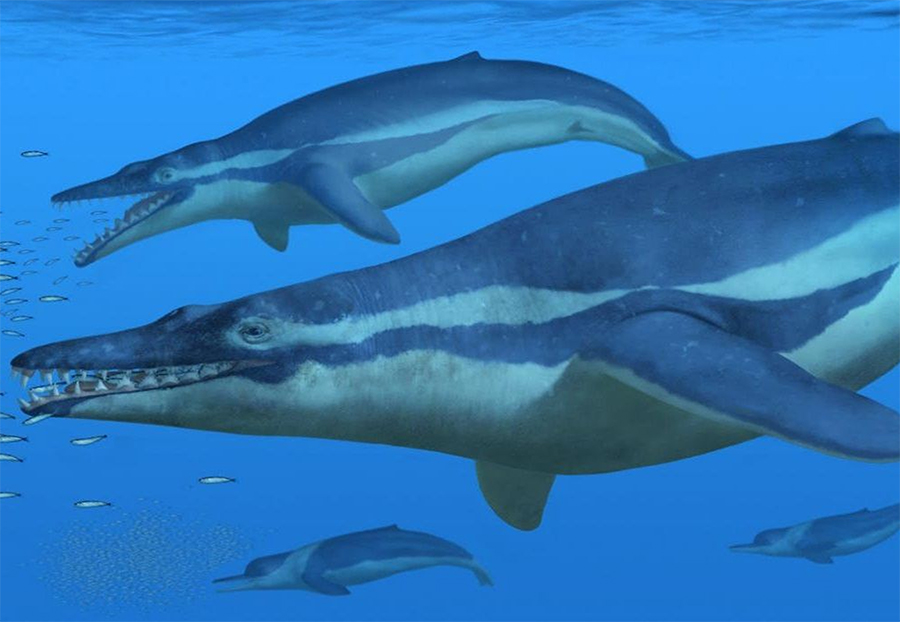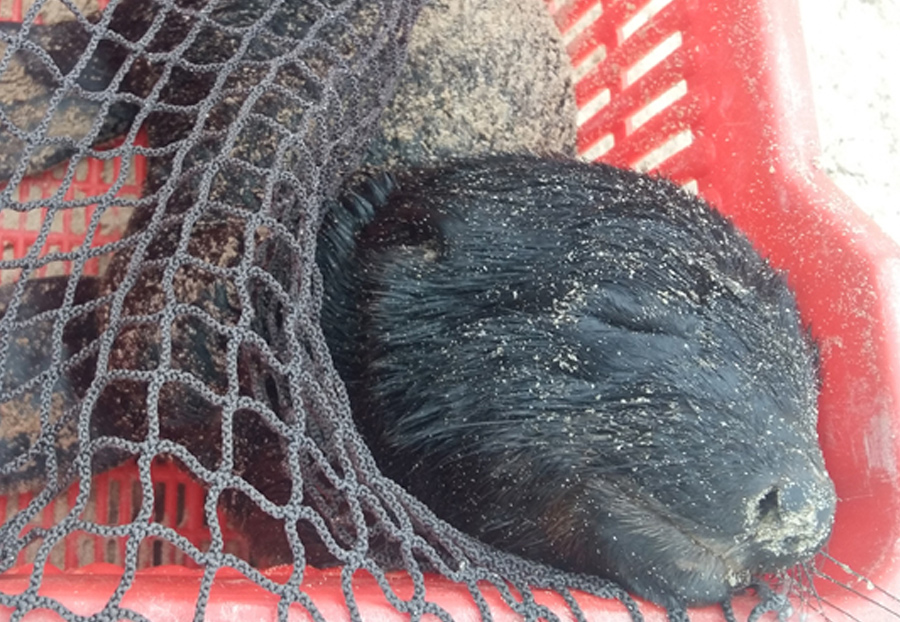Killer whale morphotypes of South Africa

Here in Plettenberg Bay we are lucky enough, on occasion, to see the ocean’s apex predator, the killer whale (Orcinus orca). The killer whale is a cosmopolitan species, which means that it is found in all the oceans of the world. In fact, it is so widely distributed that it is the second-most widespread mammal after humans. Although the killer whale is currently listed as one species, it consists of a number of populations, many of which are ecologically, genetically and morphologically distinct.
In South African waters, killer whales are listed as “Least Concern” and the populations occurring off our shores are almost entirely unknown. Off the South African mainland there is evidence for two distinct morphotypes that differ in size, morphometrics, dental wear, diet and possibly pod size. Most of the individuals that are sighted and strand along our coast are believed to be “Type A” killer whales, while a few strandings, and possibly sightings, have been of the lesser known “flat-toothed” morphotype.
Off South Africa, Type A killer whales attain a maximum length of 8.81 m and 7.9 m for males and females, respectively, and usually travel in groups of six or less individuals. Their diet appears to be focussed on marine mammals, with an 84.6% incidence of marine mammal remains in the 26 stomachs that were analysed. However, the stomachs also contained fish (23.1%), squid (3.8%) and seabirds (3.8%). Half of the stomachs that contained fish also contained marine mammal remains. Based on this, it appears that the majority of killer whales off South Africa are opportunistic megavertebrate predators. Indeed, along the South African coastline killer whales have been observed preying upon dolphin species, such as common dolphins (Delphinus delphis), and whale species, such as Bryde’s whales (Balaenoptera edeni), on a number of occasions. They are also numerously observed depredating the lines of commercial shark and tuna longline fishery vessels. In Plettenberg Bay, killer whales have been observed attacking and killing a 4 m great white shark (Carcharodon carcharias), and on another occasion, a group of three killer whales attacked and killed a Cape fur seal (Arctocephalus pusilus pusilus).
The “flat-toothed” morphotype, as described from the stranding of three individuals, differs from the Type A morphotype by being shorter in length and having highly worn down teeth. Males of this morphotype were 1.5 m shorter than the modal length of other killer whale males stranded in the region, while a female was found to be 2 m shorter than the modal length of other South African female killer whales. The highly worn down teeth are believed to be as a result of a specialised diet on sharks, which have highly abrasive skin. One stomach from these three individuals contained 2549 elasmobranch vertebrae, many ceratotrichia (filaments of elastic protein found in shark fins) and one large bony fish vertebra. The largest vertebrae were identified as most likely coming from a carcharhinid shark, while DNA barcodes matched two other vertebral sections as Blue shark (Prionace glauca). The “flat-toothed” morphotype is also believed to travel in larger social groups than the Type A morphotype. On 12 January 2015, a pod of 20 killer whales, spread out over a large area, was observed in False Bay. Their behaviour was quite different to other, smaller pods seen prior to this, who usually hunt common dolphins in the bay. While it is possible that these individuals may have been of the “flat-toothed” morphotype, the distinguishing morphological features between these two morphotypes are not readily apparent at sea and to date there have been no confirmed sightings of this morphotype off South Africa.
South Africa also boasts a population of killer whales around its Prince Edward Islands in the sub-Antarctic. This population bears some morphological resemblance to Antarctic Type B killer whales, to which they are also genetically closely related. However, at this point, it appears unlikely that this population is ever seen off mainland South Africa as the most northerly satellite-tracked individual, although coming close, did not overlap with killer whale sightings off the South African coast. Furthermore, no photo-identification matches have ever been made between killer whales from the Prince Edward Islands and South Africa.
There is still much to discover about the killer whales found off our coastline, but one thing is certain; whenever killer whales are sighted along our coastline they elicit great excitement, and it is a true privilege to see these magnificent creatures in the wild.
Written by: Danielle Conry
For further reading:
- BEST, P. B. 2007. Whales and dolphins of the southern African subregion. Cambridge University Press, Cape Town, South Africa.
- BEST, P. B., MEYER, M. A. & LOCKYER, C. 2010. Killer whales in South African waters – a review of their biology. African Journal of Marine Science 32(2): 171-186.
- BEST, P. B., MEYER, M. A., THORNTON, M., KOTZE, P. G. H., SEAKAMELA, S. M., HOFMEYR, G. J. G., WINTNER, S., WELAND, C. D. & STEINKE, D. 2014. Confirmation of the occurrence of a second killer whale morphotype in South African waters. African Journal of Marine Science 36: 215-224.
- Reisinger, R. R., de Bruyn, P. J. N., Bester, M. N. & Findlay, K. 2016. A conservation assessment of Orcinus orca. In: The national Red List of mammals of South Africa, Swaziland and Lesotho, (eds) M. F. Child, E. Do Linh San, D. Raimondo & H. Davies-Mostert. South African National Biodiversity Institute.
URL: https://www.ewt.org.za/Reddata/pdf/Cetacea/2016%20Mammal%20Red%20List_Orcinus%20orca_LC.pdf




